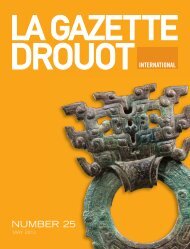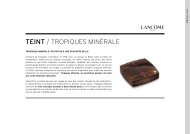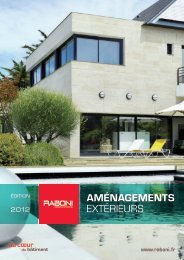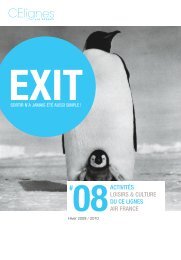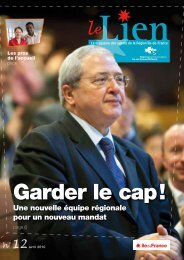Art Market Magazine - Visit zone-secure.net
Art Market Magazine - Visit zone-secure.net
Art Market Magazine - Visit zone-secure.net
Create successful ePaper yourself
Turn your PDF publications into a flip-book with our unique Google optimized e-Paper software.
THE MAGAZINE EXHIBITIONS<br />
Paris Shanghai on the road to modernity<br />
The Shanghai Museum is lending a large<br />
selection of paintings and calligraphies to<br />
the Musée Cernuschi for an exhibition dedicated<br />
to the Shanghai School. This belonged<br />
to a very troubled period in Chinese history:<br />
the end of the Opium War. In 1842, the Treaty of Nanking<br />
gave Westerners access to ports like Canton and Shanghai.<br />
A number of artists, antique dealers and historians<br />
settled there, and their contact with a cosmopolitan<br />
society brought about a new interpretation of the<br />
Empire's cultural history, paving the way to modernity.<br />
Classical painting subtly changed through the use of<br />
various techniques like stamping, archaic calligraphy<br />
and seal engraving, and eventually new media like<br />
photography (which had many enthusiasts in Shanghai),<br />
all of which contributed ideas like relief, trompe-l'œil and<br />
a more powerful line, particularly evident in the work of<br />
Zhao Ziqian. This poet, calligrapher, seal engraver and<br />
flower painter followed a tradition going back to the<br />
Yuan dynasty, and passed down through the great Ming<br />
dynasty painter Shen Zhou, who favoured the use of<br />
brush and ink. The painters of the Shanghai School<br />
sought this powerful impulse while adopting the use of<br />
Western colours. One of its chief proponents was Ren<br />
Xiong (1823-1857), a member of the "Four Rens" family<br />
from Xiaoshan, a region south of Shanghai. The young<br />
Xiong studied the art of the portrait with a village<br />
teacher. But he rebelled against the orthodox rules of<br />
painting early on, and in 1846 left his native village for<br />
Hangzhou, where he met the collector Zhou Xian. He<br />
spent a number of years with him, copying the ancient<br />
Museum<br />
Ren Xiong (1823-1857), "La Chaumière du lac Fan" (detail),<br />
ink and colours on paper, 39.7 x 705.4 cm.<br />
Shanghai ©<br />
88 GAZETTE DROUOT INTERNATIONAL I N° 23<br />
HD





